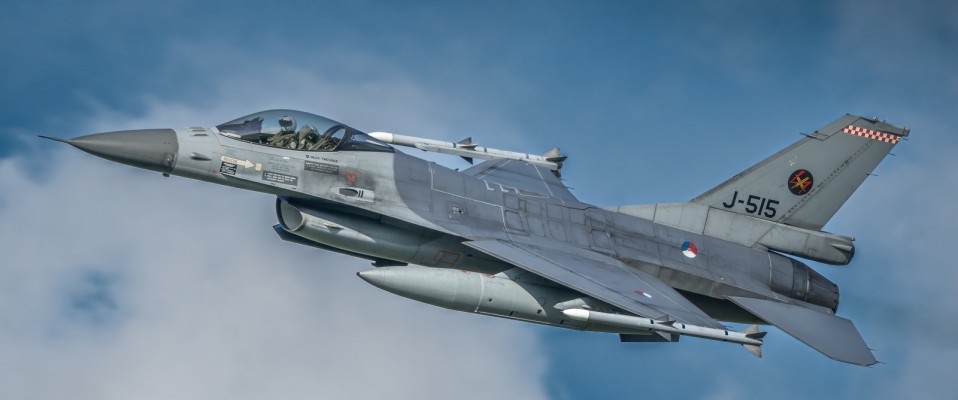RNLAF: 312 “Bonzo“ Squadron Falcon Sundown

Written by: Danny Reijnen
All images by author or otherwise mentioned
January 31, 2024
Introduction
The Royal Netherlands Air Force (RNLAF) operates the Lockheed Martin F-16A since the early eighties. A total of 213 F-16’s were acquired and in during the early nineties ten operational squadrons were fully equipped with the F-16. During the operational use several Mid Life Updates (MLU) have been integrated to keep the F-16 in the best suitable conditions, in order to meet the requirements as set by the RNLAF and NATO. Where it al started in 1984, the curtain will fall in 2024. With the integration of the Lockheed Martin F-35A Lightning II into the operational squadrons, the Royal Netherlands Air Force (RNLAF) will withdraw the aging but trusty F-16 in September 2024.
The motto of 312 squadron is Audax Cum Consilio or Bold and Discreet. 312 Squadron introduces itself as: ”We deliver wordwide airpower at descretion of the dutch government. We are dedicated to to strike hard when needed, using the latest tacticts and capabilities. We operate the F-16 which is constantly updated to enable international integration and to keep up with modern threats and demands”.
The nickname of the squadron is Bonzo, derived from the name of the dog of the commander of 327 squadron, the first Royal Netherlands Air Force squadron which had Volkel as its home base. Danny Reijnen reports the recent developments of the sole remaining F-16 Fighting Falcon squadron in the Netherlands.
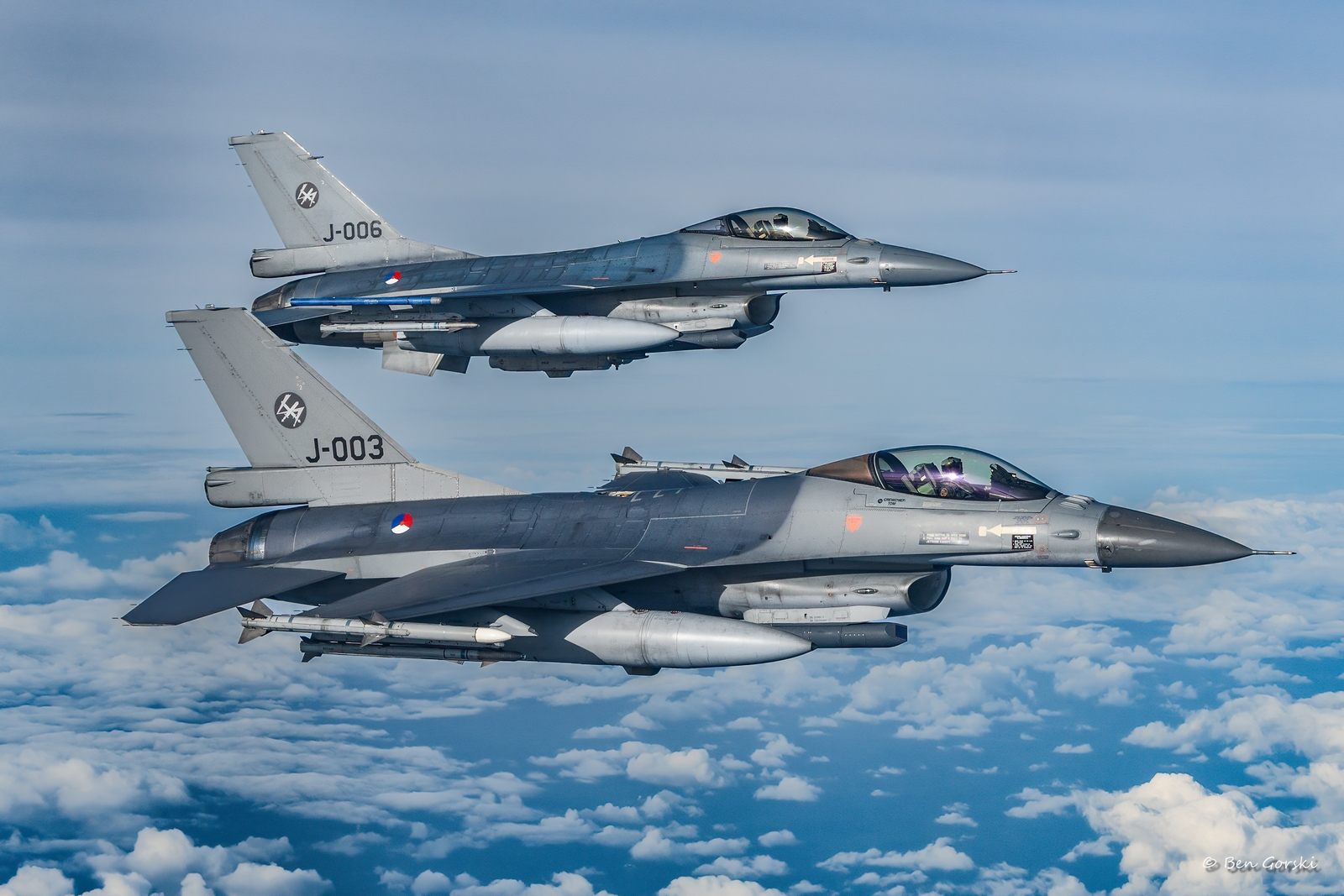
Introducing the fourth generation fighter
In 1951, the 312 squadron was founded. A year later the squadron was equipped with twenty-five Republic F-84E Thunderjets. By 1956, the 312 squadron started the conversion to the Republic F-84G Thunderstreak. Between October 1965 and early 1966, the Lockheed F-104G Starfighter replaced the F-84G Thunderstreaks.
The Netherlands were one of the four European Participating Air Forces, and one of five countries to build the F-16 locally. The Netherlands was one of the four initial European NATO customers to acquire the F-16, with the other NATO members Belgium, Denmark, and Norway. The initial Dutch order for F-16A/B aircraft was for 102 aircraft of which were eighty single-seat F-16A aircraft and twenty-two dual seat F-16B trainers, which were to be assembled at Fokker. This line first opened up for business in April 1978, and was the second of the European F-16 final assembly lines to open, with SABCA in Belgium being the first. The first Dutch built F-16 took off on its maiden flight on 03 May 1979. The initial delivery of the F-16A/B to the Royal Netherlands Air Force took place in June of 1979.
In March 1980, the Netherlands stated their interest in a follow up order finally approved by the Dutch Parliament in December 1983 to buy an additional 111 aircraft, of which were ninety-seven F-16A aircraft and an additional fourteen F-16B trainers. The final F-16 rolled off the line at Fokker’s Schiphol plant on 27 February 1992.
Volkel Air Force Base was operating three squadrons of F-104G Starfighters and all three squadrons were to make their transfer to the newly acquired F-16 Fighting Falcon. On 27 July 1984, the first F-16 landed at Volkel Air Force Base assigned to 312 squadron. The F-16 will continue to perform their tasks from Volkel Air Base until at least 2024 operating the F-16AM Fighting Falcon for almost four decades.

“BONZO” lead
The current commanding officer of 312 Squadron is Lieutenant Commander Patrick “Naish“ Vreeburg. Naish gained command of 312 Squadron nicknamed Bonzo in December 2020 and will lead 312 squadron through the final sundown period operating the F-16AM Fighting Falcon.
Currently 312 Squadron has the same tasks assigned as 313 Squadron. The difference is that 313 Squadron currently operates the fifth generation Lockheed Martin F-35A Lightning II, but both squadrons are assigned the same primary tasks. Both squadrons can be used for both air support and air defense tasks according to the so-called swing-role principle. This means that the squadron can quickly switch between these two assigned tasks.
Although 312 squadron, is the sole remaining Royal Netherlands Air Force squadron still operating the F-16AM, the squadron still has to fulfill their operational tasks assigned to the squadron. While downsizing its fleet, the remaining F-16 pilots and ground personnel have commenced their conversion training to the F-35A already, meaning the available capacity to operate and maintain the remaining F-16AM fleet deceases at a steady rate. The flexibility required from the entire staff to ensure aircraft serviceability is requested in in the remaining months to guarantee the operational needs operating the F-16.
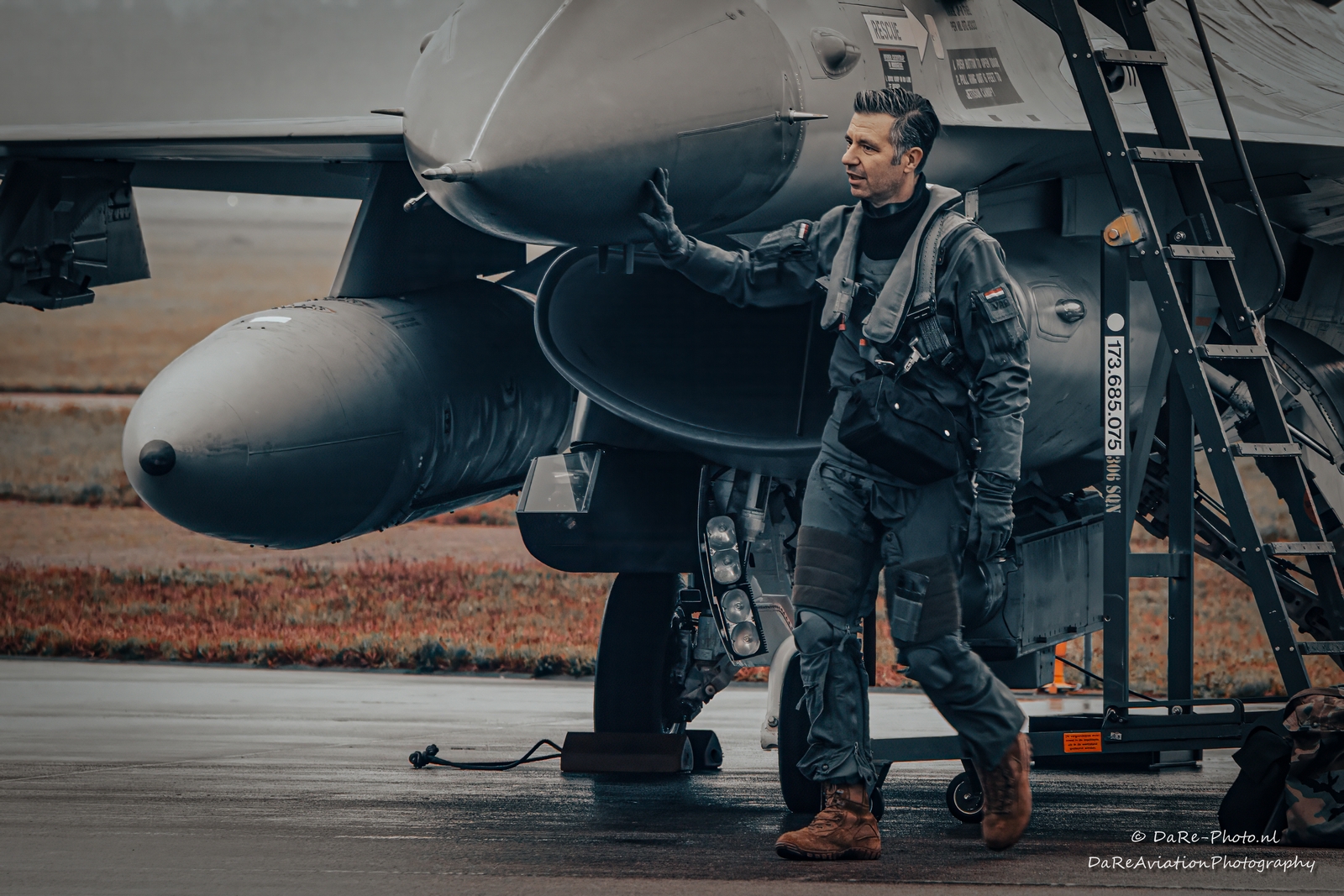
Quick Reaction Alert
In April 2023, the Quick Reaction Alert task was transferred from the Belgian Air Force to the Royal Netherlands Air Force 312 Squadron based at Volkel Air Force Base. As both nations are phasing down F-16 operations Belgium and the Netherlands introduced the BENELUX (Belgian – Netherlands – Luxembourg) Air Policing on 01 January 2017.
To fulfill the task to respond to any situation taking place within the BENELUX air space, two fully armed and fueled F-16AM aircraft are always kept ready to respond to any emergency situations in their assigned airspace. When an alarm is generated, the jets are launched within the specified seven minutes to intercept their designated contact. Pilots scheduled for these Quick Ready Alert (QRA) task are on a 24 hour standby and two F-16Am’s are fully checked, fueled and armed to perform their QRA duties. After 24 hours the pilots are relieved and another shift takes over. The aircraft are also regularly changed to ensure the operability of the aircraft when called upon, providing the opportunity to maintain the aircraft in an as early as possible stage.
The nation where the situation occurs will conduct the air policing QRA mission. With this responsibility being transferred, the primary task of 312 squadron is to respond adequately to potential threats which might occur within the assigned airspace of the Netherlands, Belgium and Luxembourg. As Luxembourg does not operate a domestic airspace the task is transferred and fulfilled by the Royal Netherlands Air Force and the Belgian Air Force.
The Quick Ready Alert task would usually reside with 322 Squadron based at Leeuwarden Air Force Base. Because 322 Squadron had only recently completed their conversion to the Lockheed Martin F-35A Lightning II the squadron was not capable to fulfill the assigned QRA task previously. Additionally the 322 squadron was temporary deployed to Poland to perform the QRA tasks assigned by the Dutch government as a vital part of NATO air policing mission, as a result of the conflict in the East. Probably 322 squadron combined this deployment and their assigned their QRA tasks to become familiar and fully operational with the F-35A.
As 312 Squadron still possessed full operational capability and capacity, the task was transferred to the squadron although they were operating the aging F-16 Fighting Falcons. With the upcoming withdrawal from use, this would be one of the last times 312 squadron stood up for QRA duties operating the F-16, taking care of the QRA tasks, 24 hours a day, 7 days a week.
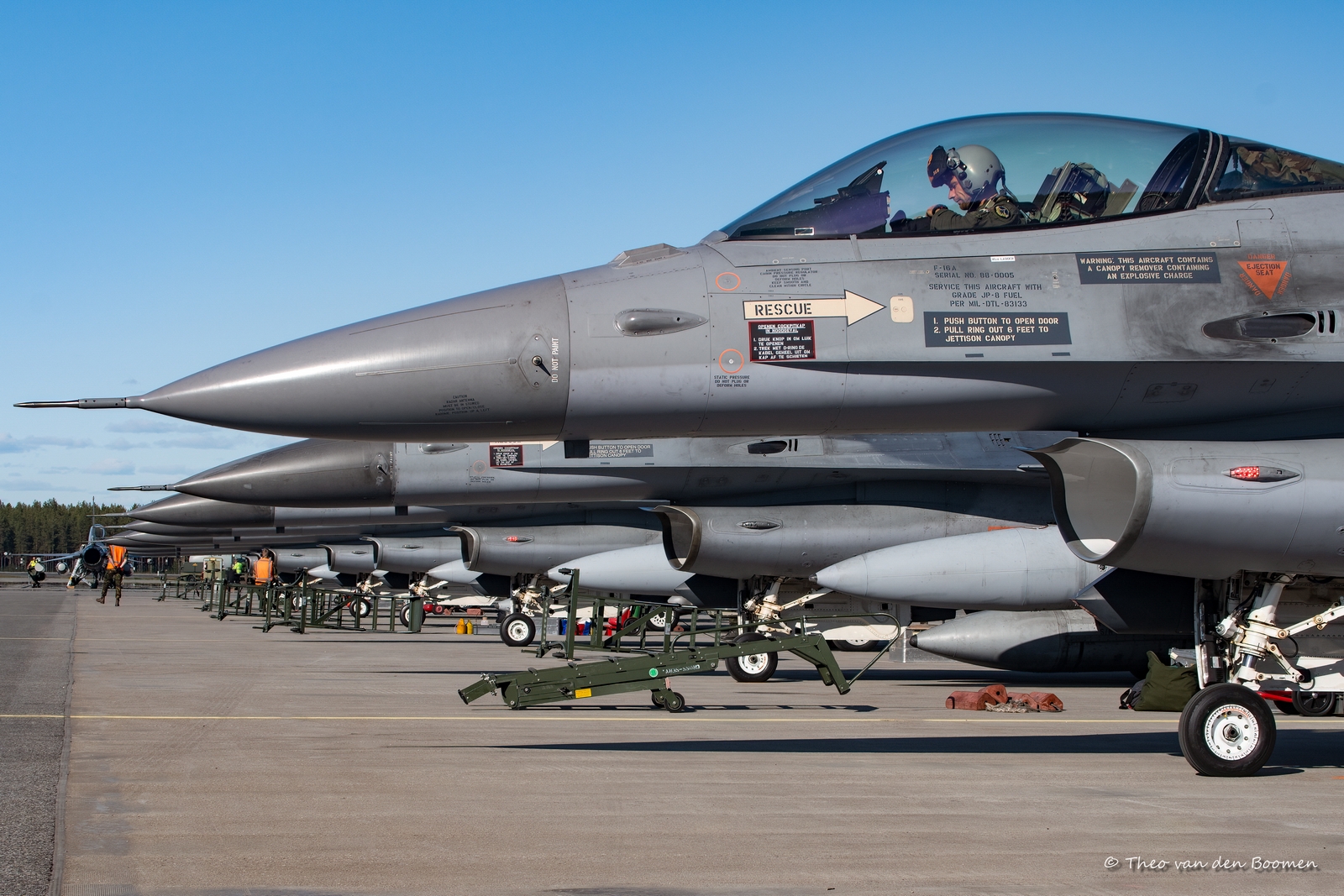
Operational guarantee
To keep the remaining fleet in operational condition, little has changed in the past decade. Alhough aircraft are currently withdrawn from use because the aircraft were selected to be sold to third parties, not because they have reached the end of their service life, the maintenance on the remaining aircraft in service with 312 sqn still continues like business as usual. Evaluating forty years of F-16 operations, there are no increased risks involved than operating the more modern F-35A aircraft. The original aircraft manufacturer has developed several maintenance programs. These update and upgrade programs as shared by the manufacturer with the operating Air Forces and the implementation is well assisted. The MLU software is continuously updated and if the user follows the maintenance instructions, the risks are minimal. During the period the aircraft are operated, certain inspection periods have been adjusted. Usually, the deadlines have become longer because, due to advance insight, the risk of errors can be estimated lower. Inspections have also been added because errors have been detected that need to be checked again after a certain number of flight hours, days or months.
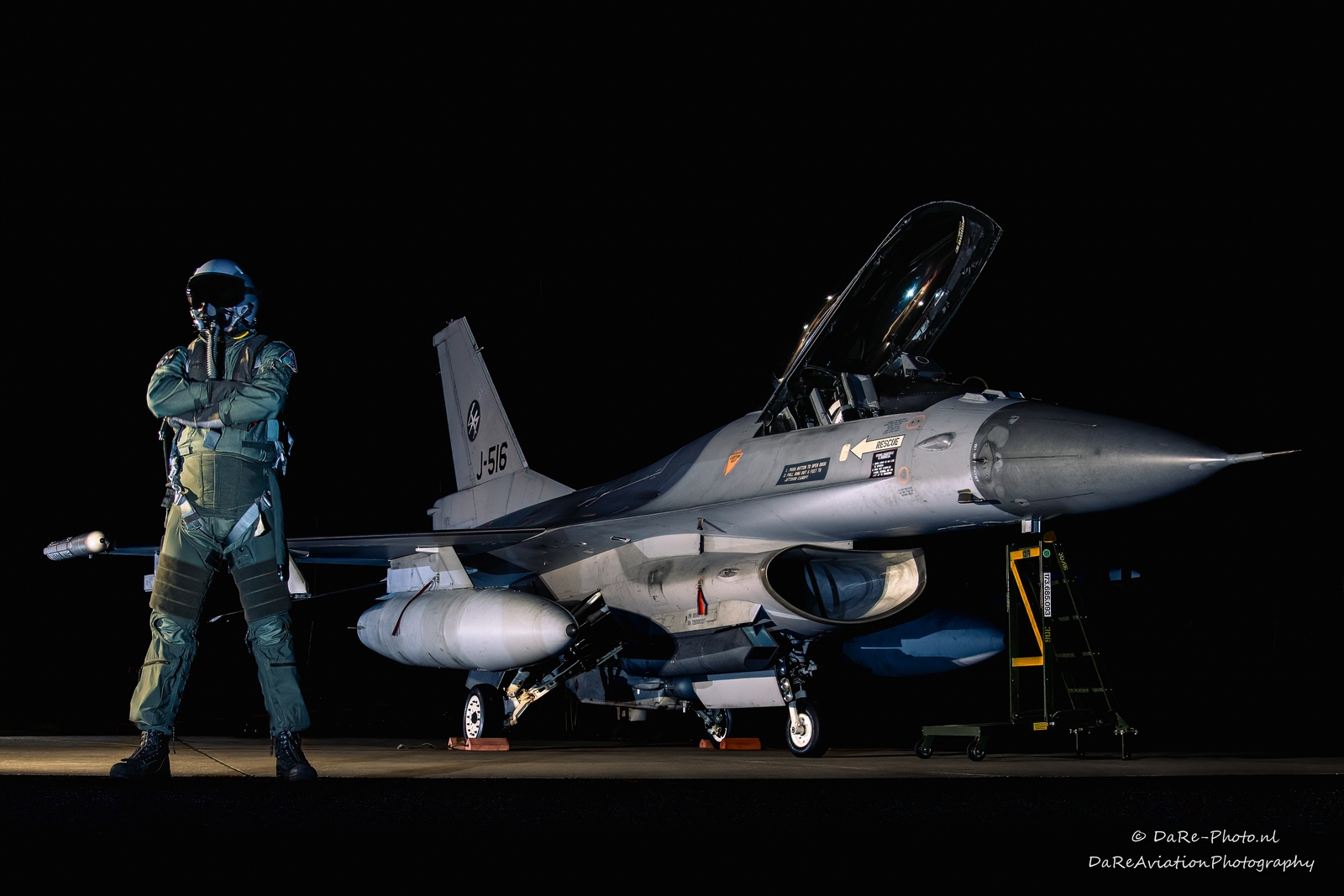
Reaching out
Although the 312 squadron is approaching its final conversion to the F-35A Lightning II “Naish” explains “We still have responsibilities involving this aircraft until 2024.”
During 2023 the squadron participated in several integral NATO exercises. 312 Squadron participated to Artic Challenge Exercise where the squadron deployed to Sweden, Air Defender while operating from their own Air Base. For the Frisian Flag exercise the squadron flew it’s mission out of it’s homebase for two weeks. Steadfast noon was the final international exercise with 312 squadron being deployed to Aviano Air Force Base in Italy for two weeks.
Naish provides insight into the motivation for participating in this year’s exercises. Despite the prevailing argument against the necessity of large-scale drills, he underscores that the primary concern is not the platform but rather the personnel involved. With over 80% of his staff transitioning to the F-35, covering not only pilots but also essential support roles such as crew chiefs, intelligence personnel, aircraft and avionics specialists, and weapons technicians, there is a critical need to ensure continuous exposure and training for these individuals.
Offering a comprehensive perspective, Naish highlights, “This squadron bears the two most crucial responsibilities in the air force, and perhaps even the armed forces. This status remains until the F-35 achieves operational readiness in both missions by 2024. Having been involved in the F-35 project, I am well acquainted with the challenges inherent in this transition.”

Readiness exercise Volkel Air Force Base
On 08 December, 312 squadron performed a readiness exercise. It was most likely the very last time the F-16s at Volkel Air Base were ready for deployment at the same time, for a so-called Elephant Walk. A total of fourteen aircraft participated to test the present readiness and demonstrate operational effectiveness. “Good to show how much air power we can put on the mat in this transition phase,” Naish” stated. Prior to their departure for deployment, the F-16s assigned to 312 squadron performed an elephant walk.
The Elephant Walk originated in the United States, but Naish is cautious about the term. “When we used it in 2021, the last time we did this, it came across to some as a political statement. As if we were showing we were ready for action. Whereas for us it was actually a great time to show how many aircraft we could get deployable. It was good for the motivation of our people.
The Elephant Walk is a term that came into vogue with the United States Army during World War II. The sight of a huge number of aircraft traveling one after another down the runway, taking off and flying away was reminiscent of elephants walking in formation. An Elephant Walk is used to exhibit capability and striking power and optimize the cooperation of a squadron.
The aircraft involved in the Elephant Walk undertook a “standard mission,” covering training areas over the North Sea and Danish territories. Coordinating the operation required collective efforts from the entire 270-member team of 312 Squadron. The unit has maintained this size since the integration of 313 Squadron and a significant portion of the 900 Maintenance Squadron into 312 Squadron in 2021. According to Naish, “The consolidation has proven to be highly beneficial in enhancing the deploy ability of our aircraft.”
“In short, a team effort”, Naish emphasizes. “Also in execution. Because besides the fact that we have to have enough crates ready at the right time, we also have to make sure we don’t get in anyone’s way when so many planes are moving at the same time. It has to go safely, in the right order, and we have to be careful with the jet blast, for example. Coffins must not harm each other by being too close together. Actually, this is our daily work, only now in a bigger picture.”

End of an era
312 Squadron will continue its operational responsibilities while operating the F-16 in 2024 with approximately eighteen operational F-16AMs. It is unknown how many F-16 pilots will be available throughout 2024, as the transition towards the F-35A training for all new pilots is currently the standard operating procedure The main challenge of 312 Squadron in 2024 will be the downsizing of their F-16AM aircraft reducing the operational capabilities of the squadron. The reduction of the number of aircraft will also affect the maintenance personnel and the other supporting departments which will pose a challenge to fulfill the operational requirements
As the remaining F-16 aircraft are put aside rapidly means that operational capabilities to fulfill additional tasks is really limited. Currently there are two operational F-35A squadrons in the Netherlands and gradually tasks will be transferred so 312 squadron can commence their conversion training to the F-35A.
A modest number of the former Royal Netherlands Air Force F-16AMs have been transferred to other nations. The first batches of F-16AM’s were transferred to the Jordanian Air Force and later also to the Chilian Air Force. The F-16AM aircraft that were based at Tuscon International Airport operating with the 152nd Fighter Wing for operational training purposes returned to the Netherlands, which meant a full stop on the F-16 training program. The F-16AM’s were transferred to SABCA facility located near Charlerloi to be retrofitted for training purposes in Romania to train future Ukrainian Air Force pilots to operate the F-16AM. Some of these F-16AMs will also make their way to Ukraine as the Dutch government pledged to supply an unknown number of aircraft to Ukraine.
After 40 years of F-16 operations, the curtain will fall for the F-16 on 27 September 2024. At this day the Royal Netherlands Air Force will cease its F-16 operations and the transition towards the F-35 will be in full progress at that time. 312 Squadron will start with a new era operating the F-35A.
The 312 squadron at Volkel Air Force Base has completed nearly four decades operating the F-16 which is a remarkable performance and is now facing the final sundown of this remarkable aircraft.
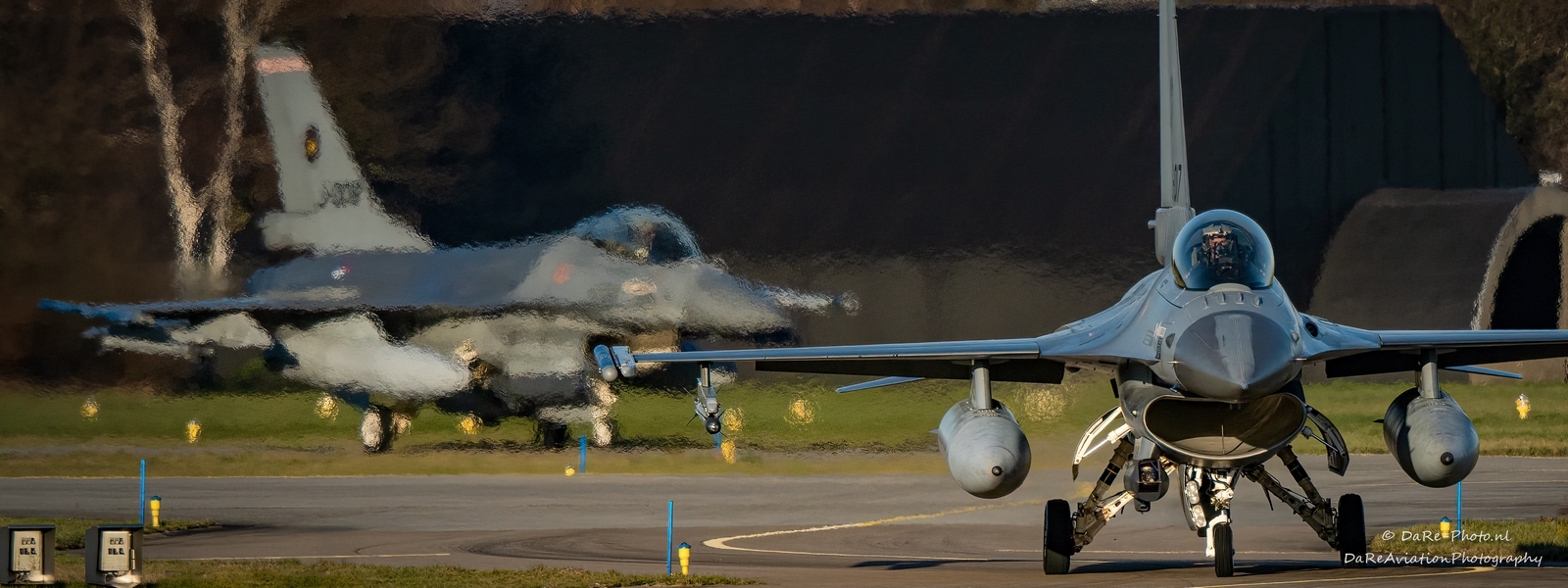
Phased out future
5 Phased-out F-16s from the Royal Netherlands Air Force have embarked on a new chapter as they departed SABCA Charleroi, Belgium, on November 7th. Their destination was the European Training Center in Romania, marking the inaugural step for the European F-16 Training Centre (EFTC), which officially opened in Romania on November 22nd. The EFTC aims to train pilots from Romania and Ukraine, fostering collaboration among European nations for a stronger defense.
Minister of Defence Kajsa Ollongren, The Netherlands and Minister of Defence Angel Tîlvăr, Romania, presided over the center’s opening, emphasizing the symbol of unity it represents for European countries. The Romanian Air Force, a NATO ally, seeks to utilize its newly acquired F-16s to monitor the eastern airspace of the alliance. The establishment of an F-16 training site on Romanian soil is a significant milestone, enabling Romania to contribute significantly to safeguarding Europe’s eastern flank.
The Royal Netherlands Air Force will station the F-16s at the “Lt. Aviator Gheorghe Mociorniță” Air Base in Romania, initiating training courses for Ukrainian pilots. The process is expected to take about a year for Ukrainian pilots to master all functions of the F-16, with maintenance support staff also undergoing extensive training.
While the earliest deployment of Ukrainian pilots in F-16s against Russia is anticipated next spring, Norway and Belgium have also committed to providing F-16 aircraft to Ukraine. Romania pledges to offer a top-notch training environment, not only for its own pilots but also for allies and partners, including Ukraine.
The decision to allocate at least 18 Royal Netherlands Airforce F-16 fighter jets to Ukraine was confirmed on December 22, 2023, by Kajsa Ollongren. Despite bidding farewell to the F-16s in 2024, the 312 squadron ensures their legacy lives on, as these aircraft find a second life at the Romanian training center and within the Ukrainian Air Force. The formidable combat capabilities of the F-16 will once again be harnessed to uphold the safety of Europe.
Danny Reijnen was born in Nijmegen, the Netherlands and currently resides in Almere in the Middle of the Netherlands with his girlfriend Susan and 4 kids.
Danny currently works for the Ministry of Defence at Schiphol Airport. His passion towards military aviation started when he was 7 years old. His dad took him to Volkel airbase. There he saw a lot of F-16s flying and he got hooked. He has been active in aviation photography since 1993.
When he first began, he was using an analog film camera. After awhile he got his first digital Konica Minolta 7D. After a couple of years the camera needed to be replaced and he bought a Sony A700. In 2015, he purchased a Sony A77 while continuing to use A700 as a secondary camera.
Despite of having a busy job, and being interested in taking photographs, Danny recently started to put his talent to use as a photojournalist in military aviation.
Danny can be reached at: [email protected]

